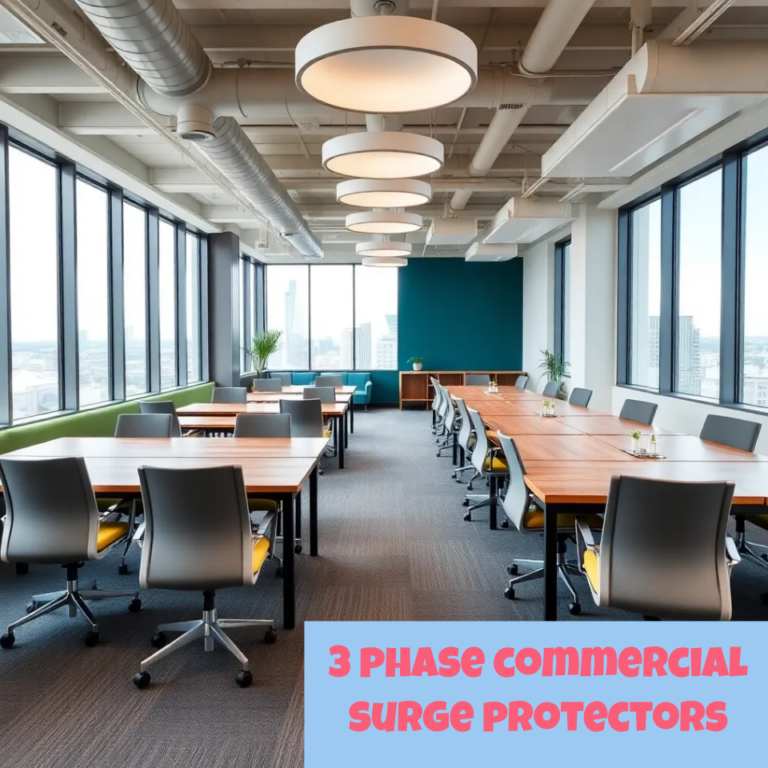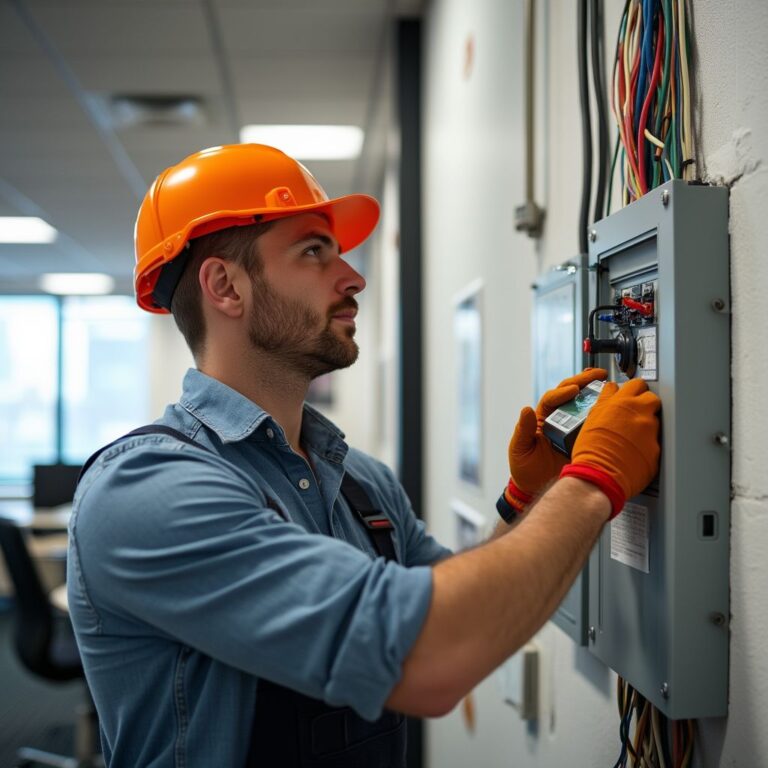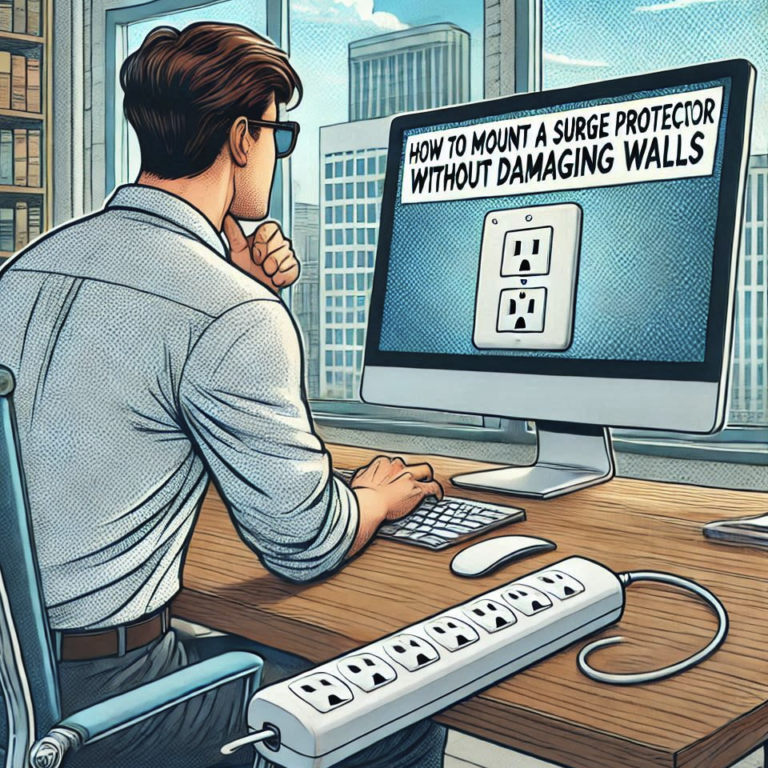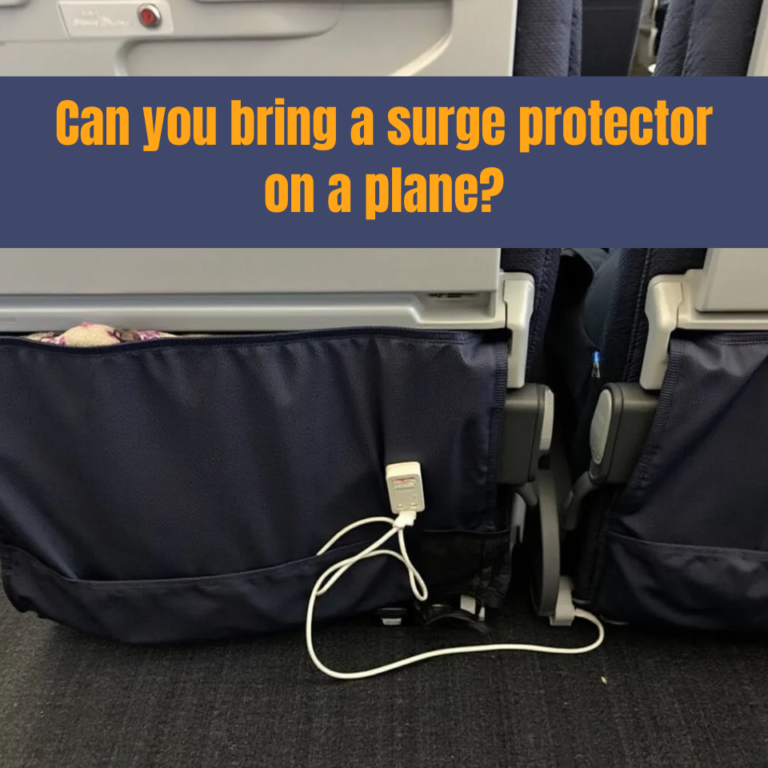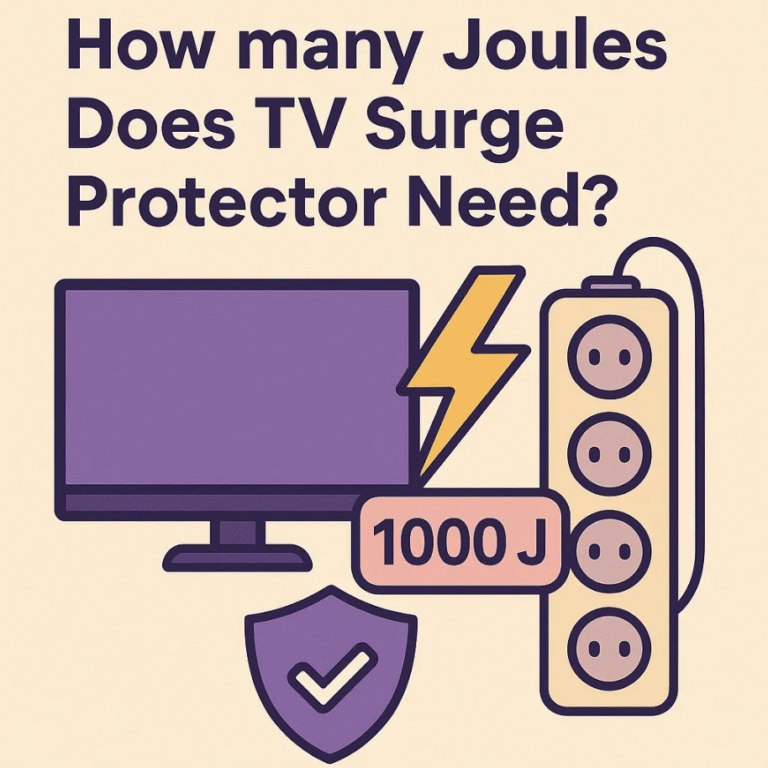What Makes Surge Protectors Essential for Modern Homes
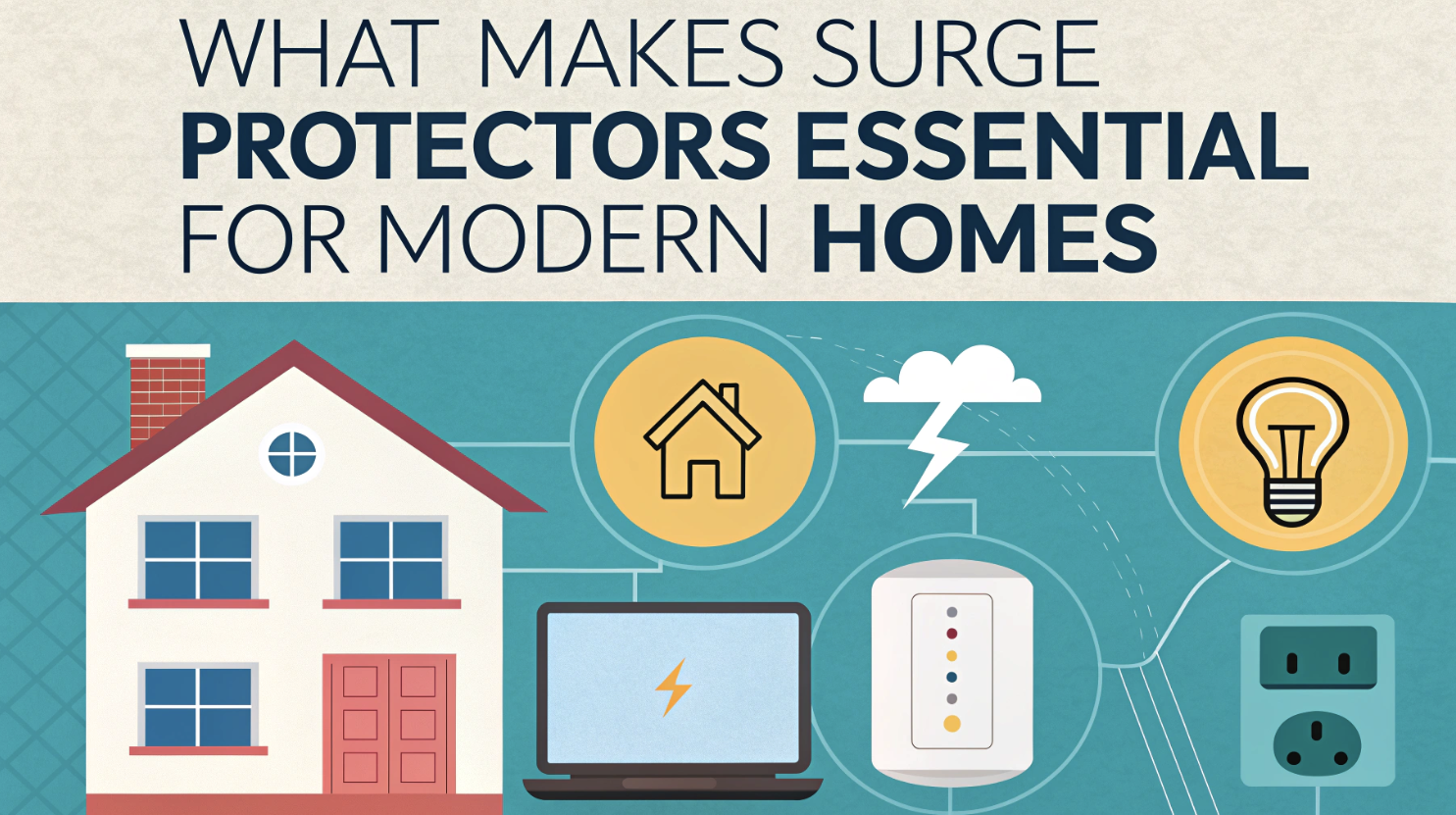
Have you ever stopped to think about how much you rely on your electronic devices every day? From your laptop to your smart TV, these gadgets are crucial, yet highly susceptible to damage. A sudden voltage spike can destroy their circuits in an instant. This is where understanding the purpose of a surge protector becomes essential.
The purpose of a surge protector is to safeguard your devices from unexpected electrical surges. Surge protection isn’t just a matter of convenience—it’s about preventing expensive repairs and ensuring the longevity of your electronics. Think of it as a reliable surge suppressor that protects the technology in your home.
Understanding the Purpose of Surge Protectors
What Is a Surge Protector?
A surge protector is a device designed to shield your electronic equipment from unexpected power surges and voltage spikes. Think of it as a safety net for your gadgets. When a sudden surge of electricity occurs, the surge protector redirects or blocks the excess voltage, ensuring only a safe amount of power reaches your devices.
This simple yet effective mechanism prevents immediate damage and helps extend the lifespan of your electronics.
Surge protectors come in various forms, from small plug-in devices to larger units that protect your entire home. They act as a barrier, standing between your valuable electronics and unpredictable electrical fluctuations.
A surge protector provides crucial protection for electronic devices such as computers, gaming consoles, and home theater systems, ensuring their continued safety and functionality.
Why Are Surge Protectors Essential for Modern Homes?
Modern homes are filled with sensitive electronic equipment that can’t handle sudden power surges. These surges can occur due to lightning strikes, power grid issues, or even internal factors like appliance cycling. Without proper protection, your devices could suffer irreversible damage.
Surge protectors play a crucial role in safeguarding your home. Here’s why they’re essential:
-
They protect your devices from power surges and voltage spikes by redirecting excess voltage.
-
They prevent gradual wear and tear caused by electrical fluctuations, extending the lifespan of your electronics.
-
They safeguard data stored on your devices, reducing the risk of loss during a surge.
-
They ensure only safe amounts of power reach your devices, acting as a reliable surge suppressor.
In short, surge protectors provide peace of mind. They let you enjoy your electronics without worrying about sudden electrical mishaps.
Common Misunderstandings About Surge Protectors
Many homeowners misunderstand how surge protectors work or when they’re needed. Let’s clear up some of the most common misconceptions:
-
Not all power strips offer surge protection. A power strip without surge protection is just an extension cord.
-
Surge protectors don’t last forever. Over time, their components wear out, and they need replacement every three to five years.
-
Circuit breakers alone don’t replace the need for surge protectors. While breakers prevent overloads, they don’t protect against voltage spikes.
-
Surge protectors aren’t only for areas with frequent thunderstorms. Power surges can happen anywhere, anytime.
Understanding these points helps you make informed decisions about surge protection for your home. Don’t let these myths stop you from protecting your valuable electronics.
What Are Power Surges and Their Risks?
Defining Power Surges
A power surge is a sudden and brief spike in electrical voltage that exceeds the standard level flowing through your home’s wiring. These surges can last for just a fraction of a second, but their impact can be devastating. Your electronics are designed to handle a specific voltage range, and anything beyond that can overload their circuits.
Think of it like a water pipe—if too much water rushes through at once, the pipe could burst. Similarly, power surges can “burst” the delicate components inside your devices.
Causes of Power Surges
External Factors (e.g., lightning, power grid issues)
External factors often play a significant role in causing power surges. Here are some common culprits:
-
Lightning strikes: Although rare, a direct lightning strike can send a massive surge of electricity through your home’s wiring.
-
Local power system issues: Problems like faulty wiring, equipment failures, or capacitor switching in the utility grid can lead to surges.
-
Heavy power users on the same line: Large equipment, such as industrial machinery, can create sudden power demands, causing voltage spikes.
Internal Factors (e.g., appliance cycling, wiring problems)
Power surges can also originate inside your home. These internal factors include:
-
Appliance cycling: High-powered devices like refrigerators or air conditioners create small surges when they turn on and off.
-
Wiring problems: Faulty or outdated wiring can cause inconsistent voltage levels, leading to surges.
Understanding these causes helps you identify potential risks and take steps to protect your electronics.
The Impact of Power Surges on Electronics
Immediate Damage to Devices
Power surges can wreak havoc on your electronics in an instant. Here’s what can happen:
-
Damage to circuitry: Excess voltage can overload and short out the delicate circuits in your devices.
-
Data loss: Computers and other data-storing devices may lose or corrupt important files during a surge.
-
Diminished performance: Appliances may start consuming more energy or functioning less effectively after a surge.
Long-Term Effects on Performance and Lifespan
Even if a surge doesn’t cause immediate damage, it can still have long-term consequences. Repeated exposure to smaller surges can gradually wear down your devices. Over time, this can lead to:
-
Reduced lifespan: Frequent surges can shorten the lifespan of your electronics.
-
Performance issues: Devices may become less efficient, consuming more energy and delivering subpar results.
-
Eventual failure: Gradual damage can accumulate, leading to complete device failure.
Using a surge protector or surge suppressor can help mitigate these risks, ensuring your electronics stay safe and functional for years to come.
How Surge Protectors Work
The Mechanism of Surge Protection
Have you ever wondered how a surge protector actually works? It’s simpler than you might think. When a power surge occurs, the surge protector acts as a gatekeeper, stopping excess voltage from reaching your devices. This is made possible by a key component called the Metal Oxide Varistor (MOV).
Here’s how it works:
-
The MOV detects the surge and quickly adjusts its resistance.
-
It redirects the extra current safely to the ground.
-
This process ensures only the right amount of voltage flows to your electronics.
Think of it as a safety valve for electricity. Without this mechanism, your devices could face immediate damage or long-term wear. Surge protection is all about keeping your electronics safe and sound.
Key Components of a Surge Protector
A surge protector is more than just a fancy power strip. It’s a carefully designed device with several components working together to provide protection. Let’s break it down:
|
Component |
Function |
|---|---|
|
Metal Oxide Varistor (MOV) |
Absorbs and redirects excess voltage, adjusting resistance dynamically during surges. |
|
Gas Discharge Tubes |
Creates a controlled path for high-voltage surges by ionizing gas inside the tube. |
|
Capacitors and Inductors |
Smooth out minor voltage fluctuations, ensuring stability in environments with frequent surges. |
Each part plays a vital role in surge suppression. Together, they form a robust defense system for your electronics.
How Surge Protectors Prevent Damage
Surge protectors act as a shield between your devices and unpredictable power surges. When a surge happens, the MOV and other components spring into action. They absorb the excess energy and redirect it away from your devices. This prevents the surge from frying your electronics or causing gradual wear over time.
Using a surge suppressor ensures your devices receive only the voltage they’re designed to handle. It’s like having a personal bodyguard for your gadgets. Whether it’s a sudden lightning strike or a small internal surge, your surge protector has you covered.
Investing in surge protection isn’t just about avoiding costly repairs. It’s about peace of mind, knowing your electronics are safe from harm.
Types of Surge Protectors for Different Needs
Point-of-Use Surge Protectors
Features and Benefits
Point-of-use surge protectors are your go-to solution for safeguarding individual devices. These compact devices plug directly into a wall outlet, offering localized protection against power surges. They’re perfect for protecting sensitive electronics like your computer, gaming console, or entertainment system.
A surge suppressor outlet, often found in these devices, ensures that only safe voltage reaches your gadgets.
One of the biggest advantages of point-of-use surge protectors is their convenience. You can easily install them without any technical expertise. Plus, they often come with multiple outlets, functioning as a surge suppressor power strip. This means you can protect several devices at once while keeping your setup organized.
High-quality surge protectors in this category also include features like indicator lights to show active protection and USB ports for added versatility.
Ideal Applications
Point-of-use surge protectors shine in areas where you use high-value electronics. Consider your home office, where a computer and printer are essential. Or your living room, where your smart TV and sound system need reliable protection. These surge protectors are also great for portable use, making them ideal for travelers who want to protect their devices on the go.
Whole-Home Surge Protectors
Features and Benefits
Whole-home surge protection offers a comprehensive shield for your entire electrical system. Installed at your electrical service panel, these systems guard against power surges from external sources like lightning or grid issues. They protect every outlet and connected device in your home, including less obvious ones like your HVAC system and lighting.
The benefits of whole-home surge protection go beyond just safeguarding your devices. They help maintain the integrity of your electrical system, preventing damage to circuit breakers and panels.
Such proactive approach saves you money in the long run by reducing the need for frequent replacements of power strips or individual surge protectors.
Ideal Applications
Whole-home surge protectors are perfect for homeowners who want peace of mind. If you live in an area prone to lightning storms or frequent power fluctuations, this system is a must-have.
It’s also ideal for homes with expensive appliances or integrated systems, like smart home setups. By investing in whole-house surge protectors, you ensure that every device, from your refrigerator to your security cameras, stays protected.
Comparing Point-of-Use and Whole-Home Surge Protectors
When deciding between point-of-use and whole-home surge protectors, it’s essential to understand their differences. Point-of-use surge protectors focus on individual devices, offering localized protection. They’re easy to install and portable, making them a flexible option.
On the other hand, whole-home surge protectors provide comprehensive coverage for your entire electrical system. They protect all outlets and appliances, including those you might overlook.
For maximum safety, consider combining both types. A whole-home system can handle large surges from external sources, while point-of-use devices add an extra layer of protection for your most valuable electronics. This layered approach ensures your home is fully equipped to handle any electrical fluctuation.
Risks of Skipping Surge Protection
Financial Consequences of Damaged Electronics
Skipping surge protection can lead to costly consequences for your electronics. Power surges can instantly damage sensitive devices like computers, gaming consoles, and smart TVs. Imagine losing your laptop or home theater system in a split second. Replacing these items isn’t cheap, and repairs can add up quickly.
High-voltage spikes can also destroy larger appliances like refrigerators or HVAC systems, leaving you with hefty bills.
Beyond the immediate costs, there’s the hidden expense of gradual wear and tear. Even small, repeated surges can shorten the lifespan of your devices. Over time, this means more frequent replacements and higher expenses. Investing in a surge suppressor now can save you from these financial headaches later.
Safety Concerns from Electrical Hazards
Power surges don’t just harm your electronics—they can also pose serious safety risks. Excess voltage can overload wires, causing them to overheat. This overheating can ignite fires, endangering your home and family. Damaged wiring or burned outlets from surges can also create fire hazards.
Here are some common dangers you might face without surge protection:
-
Overheated wires leading to electrical fires.
-
Short-circuited appliances cause sparks or shocks.
-
Exposed or corroded wiring increases the risk of accidents.
These risks aren’t worth taking. A surge protector acts as a shield, reducing the chances of electrical hazards and keeping your home safe.
Hidden Costs of Device Downtime and Repairs
When power surges damage your devices, the costs go beyond repairs or replacements. Downtime can disrupt your daily life, especially if you rely on electronics for work or school.
For businesses, the stakes are even higher. The average cost of downtime from a power surge can reach $130,000 per event.
Even for homeowners, the inconvenience of waiting for repairs or replacements can be frustrating. Imagine losing access to your refrigerator, air conditioner, or internet router for days. These hidden costs—lost time, productivity, and comfort—add up quickly.
A surge suppressor is a small investment that prevents significant power surges.
Choosing the Right Surge Protector for Your Home
Key Features to Consider
Joule Rating and Its Importance
When choosing a surge protector, joule rating is one of the most critical factors to evaluate. It tells you how much energy the device can absorb before it fails. A higher joule rating means better protection for your electronics.
For instance, if you’re protecting high-value devices like gaming consoles or home theater systems, look for a surge protector with at least 2,000 joules. This ensures it can handle multiple surges over time without losing effectiveness.
Keep in mind that surges have a cumulative effect. Each surge depletes the joules available in your surge suppressor. Once the joules are used up, the device can no longer provide protection.
Regularly check the status of your surge protector and replace it when necessary to maintain optimal safety.
Clamping Voltage and Response Time
Clamping voltage, also known as let-through voltage, is another key feature to consider. It indicates the voltage level at which the surge protector starts to block excess electricity.
Lower clamping voltages, such as 330 volts, offer better protection because they activate sooner. However, they may wear out faster due to frequent activation.
Response time is equally important. A faster response time reduces the exposure of your devices to harmful surges. Look for surge protectors with response times under one nanosecond for the best results. These features work together to ensure your electronics stay safe from sudden voltage spikes.
Additional Factors to Evaluate
Number of Outlets and Device Compatibility
Think about how many devices you need to protect. Surge protectors come with varying numbers of outlets, so choose one that fits your setup. If you have a mix of standard plugs and USB-powered devices, opt for a surge suppressor with USB ports. This adds convenience and reduces the need for additional adapters.
Compatibility is also crucial. Ensure the surge protector can handle the wattage of your devices. Overloading it can reduce its effectiveness and even pose safety risks.
Warranty and Insurance Coverage
A good surge protector often comes with a warranty or connected equipment insurance. This coverage provides peace of mind, as it compensates you if your devices get damaged while using the surge protector. Check the terms carefully.
Some warranties require professional installation to remain valid. Choosing a reputable brand with a solid warranty ensures you’re investing in reliable protection.
Tips for Installation and Maintenance
Proper installation and maintenance are essential for getting the most out of your surge protector. Follow these tips to keep your devices safe:
-
Place the surge protector in a dry, well-ventilated area away from heat sources.
-
Avoid overloading it with too many high-wattage devices.
-
Regularly check indicator lights to ensure the surge suppressor is still functioning.
-
Replace point-of-use surge protectors every 2-3 years or after a major surge.
-
Schedule periodic electrical inspections to identify potential issues in your home’s wiring.
Taking these steps helps maintain the effectiveness of your surge protector and ensures long-term safety for your electronics.
Power surges can strike without warning, leaving your electronics vulnerable to costly damage. A surge protector acts as your first line of defense, ensuring your devices stay safe from sudden voltage spikes. From whole-home systems to point-of-use suppressors, these tools protect your appliances, ensure consistent performance, and minimize the risk of electrical hazards.
Investing in high-quality surge protectors not only saves you from expensive repairs but also preserves the integrity of your home’s electrical system. It’s a small step that delivers long-term peace of mind. With the right surge suppressor in place, you can enjoy your electronics worry-free, knowing they’re shielded from unpredictable power surges.

